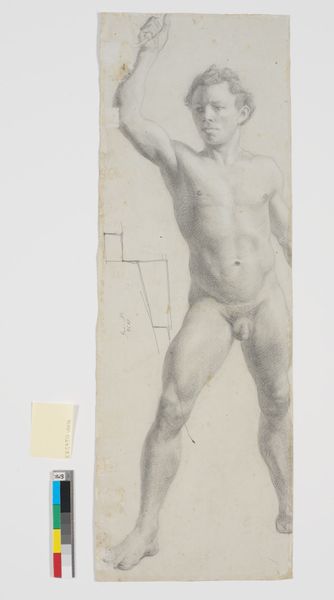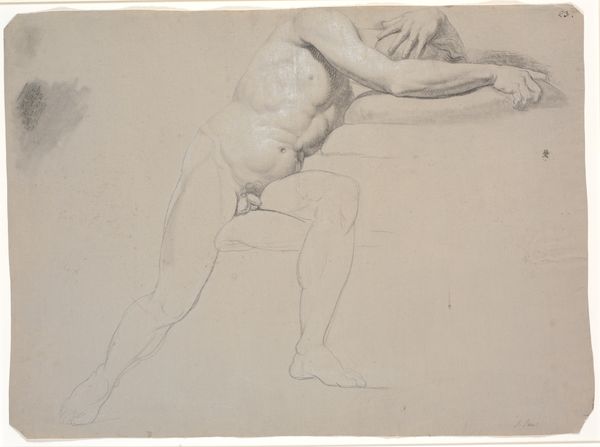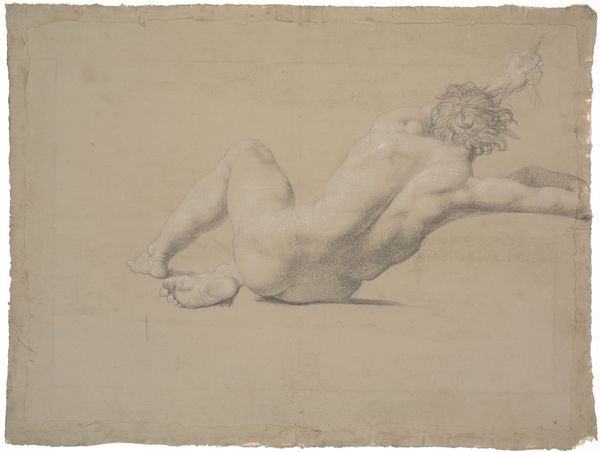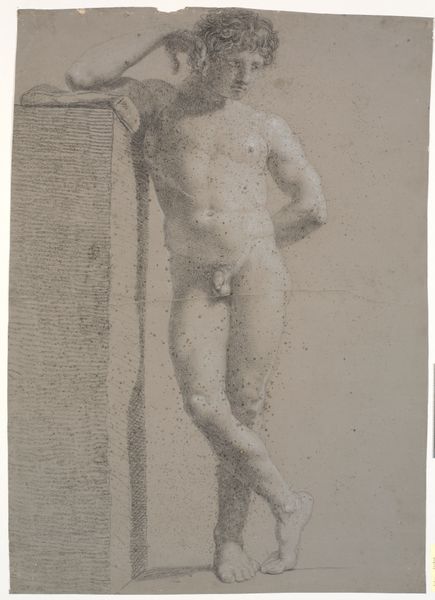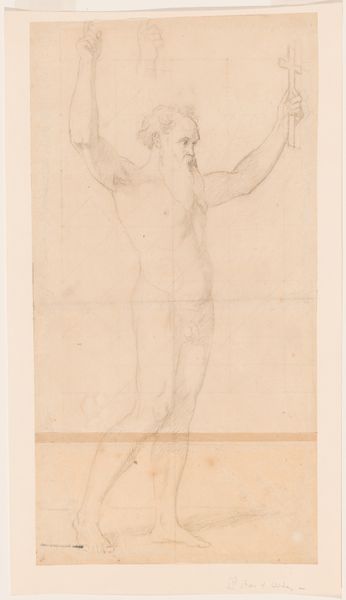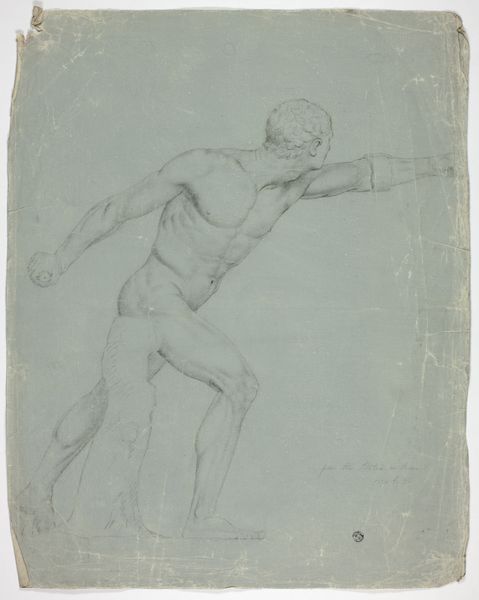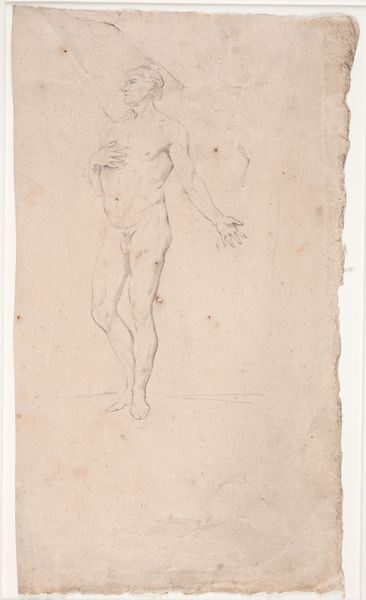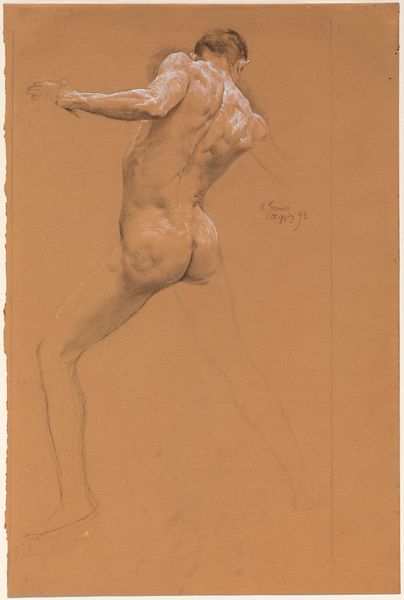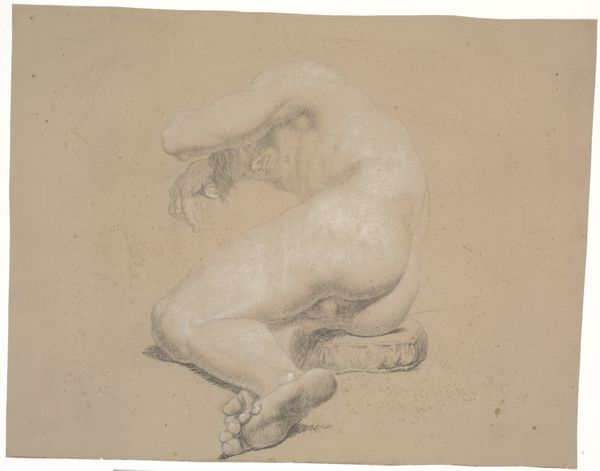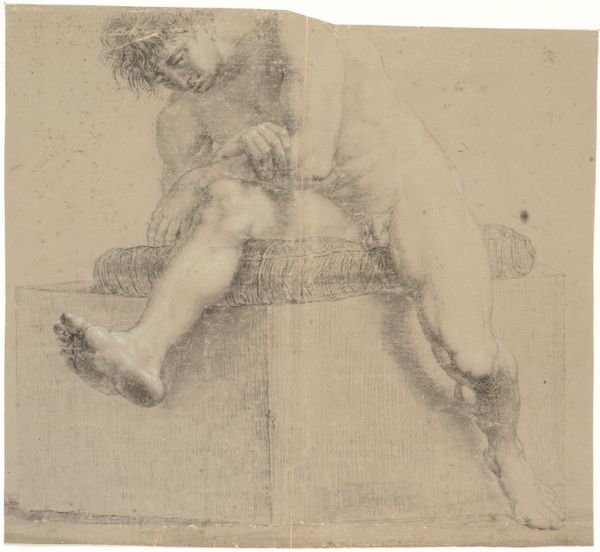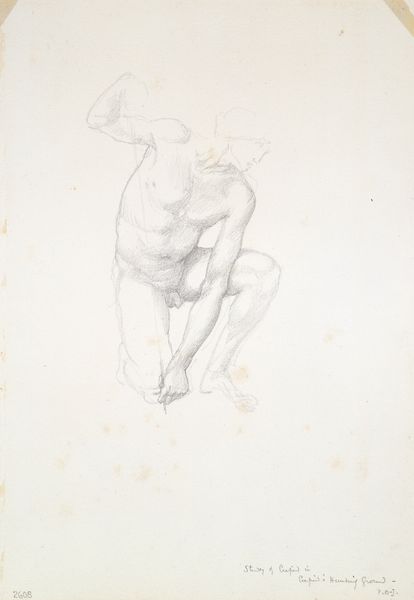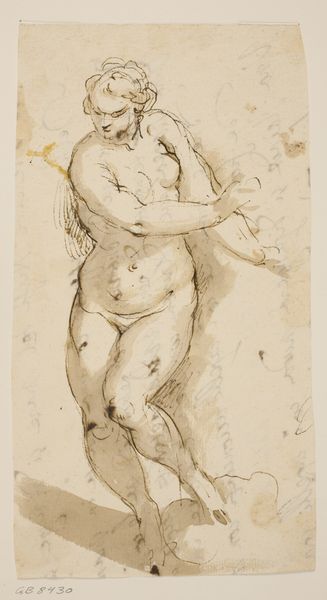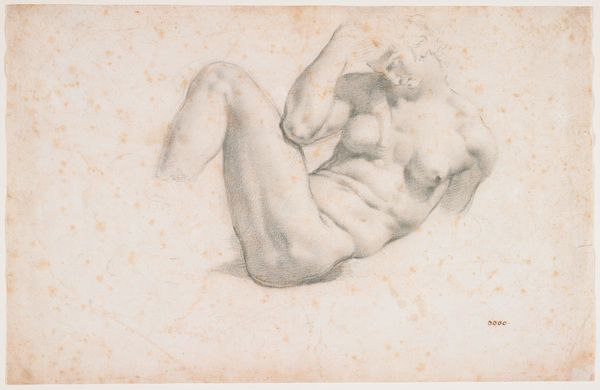
drawing, pencil
#
portrait
#
drawing
#
charcoal drawing
#
figuration
#
form
#
pencil
#
line
#
academic-art
#
nude
#
realism
Dimensions: 370 mm (height) x 495 mm (width) (bladmaal)
This is a study of a male model by Theodor Philipsen, made with pencil on paper. The artwork has a ghostly, ethereal quality, mainly due to the delicate pencil strokes and the unfinished nature of the piece, set against the rough paper. Philipsen masterfully uses line and shadow to sculpt the figure's back and shoulders, creating a sense of volume and movement. The composition is strikingly unconventional. The figure is cropped, and this gives a feeling of immediacy. Notice how Philipsen doesn't fully commit to the background; the faint outlines of figures suggest a classical setting, yet these details remain ambiguous. This lack of resolution pushes the viewer to focus on the pure form and the interplay of light and shadow on the model’s body. The unfinished quality of the drawing destabilizes traditional academic values of precision and detail. Instead, Philipsen seems to be exploring the very act of seeing and representing the human form. The sketch suggests the artist is capturing a fleeting moment, emphasizing the process over the final product. This approach challenges the idea of art as a fixed, finished object, and instead positions it as a dynamic, evolving investigation.
Comments
statensmuseumforkunst almost 2 years ago
⋮
The Danish painter Theodor Phillipsen was a student at the Royal Academy of Fine Arts in Copenhagen from 1862-1869. Part of his education was drawing nude male models. There are two drawings from c. 1867 by Phillipsen in the collection of the National Gallery of Denmark. These drawings have, however, subsequently been cropped to fit a platter and punchbowl when the artist used the other side of the paper for two ceramic designs in the 1890s. The two sketches are relatively large. This could be because Phillipsen wanted to include as much of the academy drawings on the back as possible. Today the ceramic sketches are seen as the front of the drawings, but because Phillipsen made them on paper he had used before, his academy drawings have also found their way into our collection. This could have been a conscious recycling strategy by the artist, or else the academy drawings were the only paper he had at hand when making the ceramic sketches.
Join the conversation
Join millions of artists and users on Artera today and experience the ultimate creative platform.
